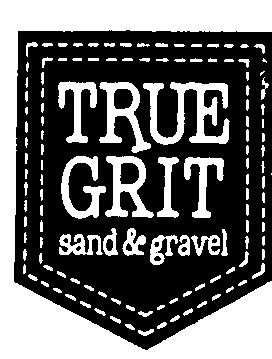South Mountain P re s s



VENTON BEATTY/FOR SOUTH MOUNTAIN PRESS
A majestic symbol of our province, bison are truly something one must behold with their own eyes. As winter approaches, bison in Manitoba are adapted to the cold with thick, woolly coats and have ways to find food, like using their shovel-like noses to clear snow. Natural grazing is usually supplemented in the winter, with many herds fed hay bales to ensure they are well-nourished.
A sense of purpose and fresh energy mark the 2025-26 school year in Rolling River School Division
DONALD BERGER
South Mountain Press
Autumn in Manitoba once again surges with invigorating energy across local schoolyards and hallways: the 2025-26 academic year is off to a confident, energized start.
Rolling River School Division (RRSD) Superintendent Jason Cline describes a tone of high engagement and renewed purpose across the division’s schools.
hard with their students in classrooms and in extracurricular activities.”
“This school year has begun with a lot of excitement and energy from both the students and the staff in all of our communities,” said Cline. “Students have been active in their academic and athletic pursuits, and staff have been working
NOURISHMENT AND CULTURE
While individual success stories are still emerging, Cline reports the early months have already been marked by widespread participation and a positive tone throughout the division. That enthusiasm is clearly felt here in our local schools, where students and staff are settling into the rhythm of educating our future citizens who will enrich the and guide our world.


The division’s foundational programs continue to play a critical role in student well-being and inclusion. RRSD’s Nutrition Program,


ensures that students have access to healthy breakfasts and snacks every day.
“Staff are working extremely hard to provide nutritious meals for students daily,” said Cline. “It’s become a regular part of the school day.”


While enrollment across Rolling River School Division has remained steady, local schools continue to adapt to evolving financial pressures with creative and targeted support.
Friday, October 24, 2025 from page 1
The 2025–26 divisional budget includes provincial funding for the Nutrition Program, which directly supports additional staffing hours to deliver daily breakfasts and snacks.
Careful planning and prudent spending have helped RRSD maintain core programs – even in a climate where many rural divisions face tough choices.
With the new school year well underway, RRSD is reminding motorists to stay alert – especially during pickup and drop-off times.
“Be aware of school bus vehicles,” said Cam Woodcock, Transportation Supervisor for RRSD. “If a school bus is within sight, chances are children will be nearby.”
Drivers must stop at least 5 metres from a school bus when its red lights are flashing and the stop sign is extended. The fine for failing to do so is $672.65 and two demerits on your license.
Woodcock added that in rare but alarming cases, drivers have passed school buses on the right-hand side – the side where students board and exit.
“It’s unthinkable,” he said. “Please be alert and patient. The safety of our students is not negotiable.”
As students and staff dive deeper into the school year, students are preparing for fall athletics, student council elections, and academic milestones. The South Mountain Press encourages readers with suggestions, questions, or story leads from within the school community to reach out – we’re always happy to shine a light on local learning.
A full slate of council members with Reeve Ian Drul presiding were in attendance at the Oct. 8 meeting of the Municipality of Harrison Park (MHP), at which support to the proposed Payne Lake Rebuild was put forth, subject to Ducks Unlimited Canada obtaining consent from landowners, and the MHP not being responsible for maintenance, including beaver removal, of the infrastructure. The Payne Lake water control infrastructure is located on SE 1-19-20 WPM, SW 6-19-19 WPM, N 1/2 36-18-20 WPM and SE 35-18-20 WPM.
Defeated Motion 2025/256: That the Municipality of Harrison Park widen the access on to SW 10-19-19 WPM.
Council sat for a public hearing regarding Variation Application 2025 V-11, applied for by Darryl and Shelline Ross. Further discussion was tabled.
Councillor Steve Langston declared a conflict and moved to the gallery while council dealt with the matter of Proposed By-Law 169 Trailer Fees. Dave Toporowsky, Kelly Frey, and AJ Lewis, all made representation with council regarding the proposed campground fees in the Municipality.
Council fully supports an immediate annual increase to the Manitoba Water Services Board’s capital budget, beginning in 2026, to $100 million from its current $24 million because the provincial economy, municipal residential and commercial growth, community development opportu-

Geese overhead and smaller wildlife on the move dictate fall will give way to winter sooner than later. It’s also the time of year when deer are being spotted in stubble fields, ditches, and along tree lines, blending well into the foliage. This spring fawn, one of two, along with their mother grazed leisurely alongside Highway 10, as motorists slowed for a look.
nities, climate resiliency, public health, and convergent federal or provincial programs are at serious risk of being postponed, cancelled, or sub optimally advanced because the MWSB is critically oversubscribed with projects and at current funding levels has a seriously compromised financial capability to complete even a fraction of the queued projects required to drive local prosperity, health, safety, and livability.
The Municipality concurs with the proposed telecommunications tower location, as proposed by SLI Towers Inc., on SW 8-18-20 WPM. Communications included Mooswa and Barclay street paving by D & J Zeke.
Councillor Langston once again left the council chambers when council dealt with Amend – By-Law No. 169 –Trailer Fees (tabled), 2nd Reading – By-Law No. 169 –Trailer Fees (tabled), and 3rd Reading – By-Law No. 169 –Trailer Fees (tabled).
First reading was given to By-Law No. 174 – Unsightly Property, being a by-law of the MHP to establish a minimum standard of maintenance for dwellings and other structures, by regulating litter, nuisances, derelict vehicles, derelict or scrap equipment, abandoned buildings, the deposit of excavated earthen material, vacant neglected lands, and unsightly property.
By-Law No. 176 – amend By-Law No. 165 – Administrative Penalties – Schedule A, for the addition of unsightly property administrative penalties was given first reading.
Councillor’s privilege included Autumn Crescent housing, coin operated water station, and housing shortage.





DONALD BERGER
South Mountain Press
Before the violins tune or the trumpets rise at this year’s Orchestra in the Forest: Brass & Timber – Sounds of Resilience with the Winnipeg Symphony Orchestra is held on Saturday, Oct. 25, another performance will already be underway – one written not in notes but in rich local flavours.
At the heart of Danceland’s kitchen stands Yurii Frolov, a Ukrainian-born chef whose story embodies the very idea of resilience that defines generations of Prairie life in this remarkable Clear Lake collaboration between the Winnipeg Symphony Orchestra and Lakehouse team.
“I arrived in Canada in June 2022, right after Russia began its war against Ukraine,” Frolov says quietly. “My main reason was to protect my three sons – to give them a childhood free of fear. I didn’t want them to carry the trauma that so many Ukrainian kids are now forced to live with. Every day back home, civilians – even children – are dying. Leaving was not a choice; it was a necessity.”
Chef Frolov had spent three decades building a culinary career that spanned Europe, managing restaurants and mentoring young cooks. “Cooking has been a part of my life since childhood – my grandmother and mother taught me the basics, and that’s where the spark began. Later I graduated from culinary college, then university programs in restaurant management. I had remarkable mentors back home, and over time, my biggest teacher became experience itself. I’ve worked as a head chef in six different restaurants, twice as a general manager, and even had a stint with Ukraine’s national airline. It’s been a 30-year journey –one that shaped every part of who I am today.
“My life split in two – before the war and after,” he says. “Cooking was all I’d ever known, so I needed to rebuild through food.”
FROM KYIV TO CLEAR LAKE
His first Canadian chapter began in Winnipeg, Frolov found a role in the famed fine dining restaurant 529 Wellington, where Chef Fraser and owner Doug Stephen welcomed him into their brigade. “I was met with respect, kindness, and incredible support,” he recalls. When Stephen later introduced him to Karly McRae of Lakehouse

Clear Lake, a summer job turned into something far more enduring – a partnership built on trust, creativity, and shared purpose.
Today, Frolov divides his time between Winnipeg’s winters and Clear Lake’s summers, moving with the seasons much like early prairie settlers. “The nature here gives me a sense of home,” he says. “The colours, the wind, the open skies – they remind me of Ukraine.”
For the Orchestra in the Forest event’s five-course dinner, A Proper Spread the menu is poetically rooted in the 1930s prairie table – venison, wild boar, duck, and foraged mushrooms paired with local roots and preserves.
“I’m not the only one shaping the menu – it’s always the work of two hearts. And I’m lucky to have Karly McRae beside me. She’s the soul of our concept – deeply connected to local farmers, foragers, and traditions. I bring my techniques and experience – the structure and finesse on the plate – while she brings a human connection to the land and the people behind the products. To-
gether, we find that balance between craftsmanship and belonging.” Frolov speaks of the menu like a composer describing a score. “We see the menu as a kind of poem –every dish a verse, every description a quiet invitation. The words themselves are soft, warm, meant to wrap around you like a blanket on a cool northern evening. This kind of project inspires me because it has no limits. It’s a space where creativity and history meet – where food becomes memory and music all at once.”
For Frolov, resilience isn’t a slogan – it’s survival. “A chef must be strong enough
to carry others through the storm,” he says. “Sometimes, cooking becomes the only language I can speak clearly. Through food, I can express what I can’t always say.”
He credits Manitobans for the warmth that made rebuilding possible. “People here are patient, tolerant, and compassionate,” he says. “That kindness – it’s something I’ll always be grateful for, and I try to give it back through my food.” Adding “The nature here gives me a sense of home – the colours, the wind, the open skies remind me of Ukraine. There’s a calmness in these landscapes that restores you. And meeting Canadians of Ukrainian heritage has been moving. Many were born here,
“My life split in two –before the war and after. Cooking was all I’d ever known, so I needed to rebuild through food.” -Chef Yurii Frolov
yet they still keep the language and traditions alive. It fills me with pride to see that our roots run deep in these prairies.”
Frolov’s next dream is to host a Ukrainian fundraising dinner, complete with traditional music and dance. “Helping through food;” he says “the funds would go to help Ukraine. I have my own non-profit organization back home that’s been providing aid to both soldiers and civilians for more than three years. It’s a cause that keeps me connected to where I came from.”
SYMPHONY OF GRATITUDE
When the final note fades at Danceland and the last candle flickers out, Frolov says success will sound simple, “For a chef, success is when the plates come back

empty. That’s when your own quiet orchestra starts playing inside – one made of gratitude, warmth, and peace.” Events like Orchestra in the Forest carry meaning beyond the music or the meal. They remind small towns that cultural excellence doesn’t stop at the big city limits. In the same way the Expressions Concert Series brings enriching cultural experiences to community halls, Clear Lake’s Danceland proves that world-class artistry flourishes in rural Manitoba – that you don’t need a skyline, expensive parking or traffic to feel the pulse of culture. Each performance, each shared table, strengthens the fabric between our natural resources and the community who proudly call this region home.
River School Division BOARD OF
invites interested individuals to present their views on EDUCATIONAL & BUDGET PRIORITIES for the Board of Trustees to consider in setting the 2026-2027 budget.
How to provide input:
• Send a written submission for the Board’s review
• Make a presentation at a Board meeting
• Visit the school division website, rrsd.mb.ca (click on the Budget Input link)
Forward a written submission or a request to make a presentation at a Board meeting to the attention of:
Rolling River School Division
c/o Kathlyn McNabb, Secretary-Treasurer Box 1170 Minnedosa, MB R0J 1E0 kmcnabb@rrsd.mb.ca The
Friday, October 24, 2025
South Mountain Press
A forgotten chapter in Arctic exploration, one with deep roots in rural Manitoba, is finally being told. Acclaimed explorer and author Adam Shoalts is set to return to Birtle on Oct. 26 to share the incredible tale of Hubert Darrell, a local man who abandoned the prairie life for the perilous beauty of the far north, only to vanish without a trace.
Shoalts’s newest book, Vanished Beyond the Map: The Mystery of Lost Explorer Hubert Darrell, recently released on Oct. 7, is the result of a decade-long quest to give Darrell the recognition he deserves.
From homestead to high Arctic, the story begins in 1890 when Hubert Darrell, along with his brother Charles, homesteaded in the Warleigh district, southeast of Birtle. But the life of a farmer didn’t satisfy Hubert. Enticed first by the Klondike gold rush, he soon found a deeper passion for the Arctic wilderness itself, dedicating the years from 1899 to 1910 to exploration.
Darrell became an important figure in the North, serving as a guide for North West Mounted Police patrols, carrying mail for Hudson’s Bay Company posts, and assisting renowned celebrity explorers like Hanbury, Tyrrell, and Stefansson. Yet, despite his pivotal role, Darrell himself remained an unsung hero.
Shoalts considers Darrell “one of the greatest in North American exploration history.” Darrell was known for his relentless ability to travel, often on foot against the elements… a staggering accomplishment even by the standards of his day. In 1910, at the age of 35, he disappeared somewhere near the Anderson River in the Western Arctic, an unsolved mystery that has lingered for over a century. Shoalts was compelled to give this legendary figure his proper place in history.
Helping to bring the past back to Birtle, the Birdtail Country Museum had already begun the process of restoring Darrell’s legacy.
“We knew that Hubert Darrell had an interesting story, and we were trying to put together his exploits for an exhibit to showcase his historic significance,” explained Val Thomson and Brenda Evans, museum cochairs.
They were tracking down his journals, maps, and letters – some located as far away as The Scott Research

Institute in Cambridge, England.
Then, unexpectedly, Shoalts reached out. Thomson remarked that it was “quite out of the blue” when Shoalts contacted Evans to find out more about Darrell’s home life. The museum immediately recognized the importance of the discovery.
“It’s hard to imagine a more exciting Birtle connection than the one that brings Adam Shoalts to share his adventures with us,” Thomson and Evans said. “Who knew that this Hubert Darrell... would be rediscovered by an award-winning author who would follow in Darrell’s footsteps to uncover the mystery of his disappearance?”
Last summer, Shoalts visited Birtle to ground Darrell’s remarkable story in its humble beginnings. Museum members spent an afternoon with the celebrated explorer, which included visiting the former Warleigh district. Marg Ashcroft, 91, whose family now owns the adjacent land, was able to show Shoalts exactly where the Darrell brothers lived. Re-
markably, she even remembered Hubert’s older brother, Charles, providing a vital human link to the distant past.
Thomson noted that seeing the author connect the local history to the Arctic mystery was deeply rewarding.
“He was able to see Darrell’s homestead and connect his background to the life Darrell chose to follow,” Thomson exclaimed. “All of this helps to bring the museum’s exhibits to life.”
The visit also included a detour that highlighted Shoalts’s own adventurous spirit – he paused enthusiastically to photograph a prairie garter snake, a connection to his “Great Canadian Snake Quest” side-project.
The culmination of a decade, Shoalts’s work involved not just reading history, but retracing it. His book represents the sum of a decade spent “searching out old ruins, and forgotten campsites, and endless hours spent squinting at faded letters and water-stained journals, all to bring to light the story of legendary lost explorer Hubert Darrell.”
In the article touching on the Clanwilliam-Erickson Fire Rescue (CEFR) fundraising for a specialized piece of equipment, noted as an UTV, which appeared in the Oct. 17 edition of the South Mountain Press, an error was made.
The Onanole Fire Department was inadvertently missed, as being CEFR’s first call for assistance in a mutual aid situation. Personnel of Onanole to the north, along with other fire departments in the South Central Mutual Aid jurisdiction – Minnedosa, Rolling River First Nation, and Sandy Lake – are very well trained, dedicated to serve, and collectively provide top notch protection to towns and municipalities within the area.
South Mountain Press apologizes for this oversight may have caused to parties involved.
Having brought this compelling history back to its origins, Shoalts is now returning to share his findings with
the Birtle community that first shaped the explorer. He will hold a book reading in Winnipeg on the Oct. 25 be-
fore arriving in Birtle on Oct. 26 to support the Birdtail Country Museum, which is actively planning a permanent display dedicated to Darrell.
Thomson believes that hearing the account directly from the explorer himself will be an extraordinary experience.
“To hear in person Shoalts’ tales of Hubert Darrell’s exploits will be a treat! Adam is an extraordinary storyteller, and his experiences will amaze and astonish and resonate even more effectively than a museum exhibit.”
The journey to rediscover Hubert Darrell is an adventure in itself, connecting his local prairie life with the far reaches of the Arctic… this mysterious trek ended somewhere in the high arctic; but now, Darrell’s epic story has finally returned to where it all began!











South Mountain Press
This past Saturday, something shifted during my usual grocery run. I wasn’t in a hurry for once, and I took the time to really look at the prices. I mean, truly look.
What I saw honestly shocked me. We all know prices have been going up for a while now, but the jump just in the last month felt huge, and very real. It was enough to make me pause and think. It got me thinking about my grandparents and how they managed. They lived through times when every penny mattered, especially during the Great Depression. They had a kind of wisdom we’ve forgotten – simple, practical ways to make a little go a long way. They didn’t have fancy gadgets or subscription boxes; they had resourcefulness. And right now, their old-school tricks
feel more relevant than ever.
First off, I’d like to think that my grandparents never shopped without a plan. I do have items written down that are “must buys”, but the rest is up for discussion. My grandmother had a list, and she stuck to it. This meant no impulse buys. She also swore by buying staples in bulk when she could –think big bags of rice, beans, flour…
These things last forever and are the foundation of countless meals. I’m starting to do this now. Instead of grabbing a small bag of chickpeas, I’ll buy a large one and cook them myself. It’s cheaper and I can portion them out for different recipes.
I was also taught to always check the unit price (that small number on the shelf tag). It’s the easiest way to see what’s truly the
with the very real new normal of continually rising prices at th e supermarket
best deal.
This was their golden rule. Grandparents saw value in everything. Leftover chicken bones became stock for soup. Stale bread was repurposed into breadcrumbs or croutons. Bruised fruit was turned into jam or a baked dessert. Nothing was thrown away without a second thought.
I’ve started trying this myself. The ends of vegetables I used to toss – now they go into a freezer bag to make vegetable stock. The limp greens in my fridge? I quickly cook them up with some garlic and they’re good as a side dish. It’s amazing how much food we waste just because it’s not “perfect.” This habit not only saves money but also honours the food itself.
Grandparents often did
have this skill down pat, but I have noticed a revival of home preservation amongst the younger generations as well. My mom is also a master at this! It is important not only to just grow vegetables, but to find ways to make them last all winter – pickling cucumbers from the garden and can tomatoes for sauces.
While I may not have had the ability to grow a full-on garden this year due to space, I’m still learning simple tricks we can use all year, winter approved!
My new best friend is my freezer. I’ve started a “soup bag” where I toss in odds and ends of veggies – the last few carrots, a half-used onion, a few celery stalks. When the bag is full, I use it to make a big pot of vegetable soup. I also freeze things in portions. A big batch of chili or pasta sauce gets frozen in singleserving containers. That way, I have a quick, homemade meal ready for a busy week-
night, which stops me from ordering expensive takeout. I also freeze bread that I won’t eat in time. And fresh herbs –instead of letting them wilt in the fridge, I chop them up and freeze them in ice cube trays with a little olive oil. It’s a game-changer for quick cooking.
This return to old-school wisdom feels like a breath of fresh air. It’s not just about saving money, although that’s a huge part of it. It’s about being more intentional

and less wasteful. It’s about reconnecting with a kind of self-reliance that modern life has nudged us away from. So, next time you’re at the store and feel that familiar shock at the prices, think about what you can do differently. Maybe it’s making a meal plan, freezing leftovers, or learning to pickle something. These small, powerful habits from the past can help us navigate the present expensive one… one grocery trip at a time.
Last week’s ad mistakenly identified the $10,000 recipient as the Erickson/Sandy Lake Handi Van. It was in fact the SANDY LAKE/ELPHINSTONE HANDI VAN that received the donation.
Our sincerest apologies and thank you once again to all involved in our fundraising efforts.
Friday, October 24, 2025
Letters to the editor: smpnews@mymts.net
What makes a happy city? Some indexes look at stuff like environment, economy and health – all very important. But then there are the little things: a sense of community in your neighbourhood, for example,or a city’sgreen space and nature, art and cultureand even itsbeauty.
The happiness metric was based on the percentage of positive responses to five statements: My city makes me happy; I feel happier in my city than other places I’ve visited or lived; The people in my city seem happy; I find joy in the everyday experiences my city offers; The sense of happiness in my city has grown a lot recently.
According to TimeOut, based on 18,000 surveys, the world’s happiest city in 2025 is Abu Dhabi! The Emirati capital gotall-round top marks, with a near-perfect 99 percent of locals agreeing

that their city makes them happy, 96 percent saying the people in their city seem positive, and 93 percent saying they feel happier in their city than anywhere else. Abu Dhabi also topped the ranks for walkabilityand was named one of the best cities for cultureandgreen space and nature. In second place was Medellín, where locals were
most likely to say they find joy in their everyday experiences (97 percent agreed with this statement). And who can blame them? There’s plenty to put a smile on your face in thislively Colombian city, fromitsenergetic nightlifeto its eternal springlike weather. It’s the world’s greenest city, according to locals, and it was also ranked the third-best city for foodthis year.
Cape Town, whichtopped our overall best cities ranking,came in third.South Africa’s coastal city boasts Blue Flag beaches, fascinating art and culture, and a diverse and exciting food scene– no wonder a whopping97 percent of locals said their city makes them happy.
Rounding out the top 10, listed respectively from 4th to 10th, were Mexico City, Mexico; Mumbia, India; Beijing, China; Shanghai,
China; Chicago, U.S.; Seville, Spain; and Melbourne, Australia.
The best places in terms of cities to live in Canada for 2025, as shared by Global Citizen Solutions, were noted as follows.
Canada offers many excellent places to live, each offering unique advantages. The best city for you depends on your individual preferences and needs. Toronto, Vancouver, and Montreal are often considered top choices, offering strong economies, diverse cultures, and vibrant city life. Other cities like Ottawa, Calgary, and Quebec City are also sought-after, offering affordability, outdoor activities, and a relaxed pace of life.
Coming in at top spot was Calgary, AB noted as one of thebest places to work and livein 2025, with good incomes, opportunities for ca-
reer growth, and a high quality of life, named the fifth most liveable city in the world in 2024.
Ottawa, coming in 2nd spot, is the fourth-largest city in Canada, with a high quality of life and purchasing power. Known for its parks, bike paths, and proximity to nature, and history enthusiasts enjoy the Canadian War Museum and the Canadian Museum of Nature.
Alberta’s capital city of Edmonton filled the No. 3 spot. It is one of the sunniest regions in the country, with an average of 325 days of sunshine per year. Home prices are affordable for the average Canadian.
Fourth best city went to Montreal, the largest city in the Québec province. If you are seeking an Englishspeaking city with a vibrant nightlife, then Montréal is an excellent destination.
Rounding out the top 5 was Hamilton, ON, the city featuring 100 waterfalls. If you were wondering where Manitoba’s capital fit in, well it placed 9th respectively behind Halifax, NS and Vancouver, BC. Winnipeg is known to balance affordable home prices with a strong job market relative to smaller cities. This livable city combines modern amenities with enough green space, although winters can get harsh. Winnipeg also embraces its diversity, home to a large immigrant community and host of Folklorama, the world’s largest and longest-running multicultural festival.
The mid-size city of Waterloo, ON, offering more affordable housing, completed the Top 10.
Until next week… Be fearless in the pursuit of what sets your soul on fire.
The Canadian Taxpayers Federation is calling on the Manitoba government to find savings after the government overspent its budget last year by about $1.4 billion, according to the 2024-25 public accounts.
“Taxpayers can’t afford a government that keeps breaking its spending promises,” said Gage Haubrich,
CTF Prairie Director. “Manitoba families have to make tough choices when their budgets are stretched and it’s time for Premier Wab Kinew to do the same.”
The Manitoba government told taxpayers it would spend $24.1 billion in 2024-25.
It overspent its budgeted amount by $1.4 billion. The overspending is largely driven by increases in the health and family departments.
Government revenue also increased about $1 billion compared to the budget.
“Health care is important, but just spending more money isn’t fixing the prob-
lem,” said Haubrich. “When the government spends too much in one area, the responsible thing to do is find savings somewhere else.”
The provincial debt was $35.3 billion, or about $23,597 per person, at the end of 2024-25. That’s a $2.9 billion increase compared to 2023-24. Government debt now represents 145 percent of total
government revenue.
Debt interest payments cost Manitoba taxpayers $2.3 billion, or about $1,534 per person last year. That’s a $160 million increase compared to 2023-24. Debt interest payments were equivalent to 9.5 percent of budget revenues in 2024-25.
“The government is wast-
ing billions of dollars per year on debt interest payments because it’s repeatedly failed to control spending and keeps borrowing more money,” Haubrich said. “Kinew needs to control spending, stick to his budget and work to pay down Manitoba’s increasing debt.”
Manitoba’s long-term small business confidence ticked up 1.9 points to 52.7 in September, according to the Canadian Federation of Independent Business (CFIB)’s latest Monthly Business Barometer¬Æ. Short-term optimism, however, fell 3.8 points to 47.8, dipping below the 50point threshold.
“These numbers show a cautious business community that is still struggling to find its footing,” said Tyler Slobogian, CFIB’s Senior Policy
Analyst for the Prairies and the North. “It’s encouraging to see a small boost in longterm confidence, but the drop in short-term expectations signals that many business owners are worried about the months ahead.”
Average price plans stand at 2.7 percent and wage plans at 2.2 percent. Hiring intentions remain subdued, with 12 percent of firms looking to
We welcome your comments on editorials, columns, or any subjects important to you. Only letters that include name,address and a daytime phone number will be considered for publication. Send us your
hire in the next few months and 18 percent considering layoffs.
“Owners are telling us they are still facing intense cost pressures, from taxes and insurance to wage increases, all while demand remains weak,” added Slobogian. “Manitoba’s small businesses are resilient, but to turn this cautious optimism into real growth, we need policies that help keep costs down and allow business
owners to reinvest in jobs and their communities.”
Tax and regulatory costs remain top of mind for 71 percent of small firms, followed by insurance costs (70 percent). Shortage of skilled labour persists for over half (51 percent) of businesses.
The share of businesses struggling with capital equipment and technology costs has reached a record high of 36 percent. CFIB’s upcoming report on small business
adoption of technology and AI will show how investing in digital tools and equipment can significantly boost productivity and help businesses become more efficient.
In Manitoba, CFIB has also consistently been calling on the provincial government to remove the Retail Sales Tax (RST) on capital purchases for small businesses to help stimulate investment and promote business growth.
“With tariff announce-
ments slowing down, the conversation is shifting toward how Canada and Manitoba can adapt to a new trade and policy reality. Business owners here still face high costs, regulatory hurdles, and labour shortages that hold back growth. The right policy signals this fall could help rebuild confidence and put Manitoba’s small businesses on stronger footing,” concluded Slobogian.






DONALD BERGER South Mountain Press
Daylight Savings Time (DST) began its quirky dance in Canada early. Port Arthur (now Thunder Bay) was the world’s first municipality to adopt it on July 1, 1908, with Manitoba cities like Winnipeg and Brandon following in 1916. These days, DST begins on the second Sunday in March (this year it started March 9, 2025) and ends on the first Sunday in November (this coming Nov. 2, 2025) in Manitoba.
The official change happens at 2:00 a.m. local time, when clocks are turned back to 1:00 a.m., effectively repeating that hour. Most folks simply set their clocks back before bed on Saturday night so they wake up on the correct time Sunday morning. The result is an extra hour of sleep that night, regaining the hour lost in spring – but sunrise and sunset both shift an hour earlier by the clock.
But shifting the clock doesn’t create more sunlight – it only rearranges our relationship to it. For communities whose traditions and livelihoods are bound to the cycles of the land, the absurdity is obvious. The sun rises and sets according to its own clock, no matter how humans adjust their watches.
From its earliest days, DST has been a cultural and practical battleground dividing rural and urban dwellers. In 1916, the introduction of DST in Winnipeg and Halifax sparked “fierce debate” in council chambers, overflowing with applause, jeers, laughter, and fervent letters to the editor.
That tug-of-war continued across the country. Farmers, whose lives follow the sun rather than the clock, have often resisted DST. For them, fields don’t care what time the clock says, and shifting hours can disrupt harvests, livestock routines, and everyday rhythms.
Meanwhile, city dwellers, retailers, and sports enthusiasts have championed DST – more light after the workday means more commerce, more recreation, and even an extra dash of vitamin D. DST was once touted as an energy-saving miracle, but the evidence is thin. A 2017 meta-analysis showed minimal electricity savings – around 0.3% – and outcomes vary by latitude and

consumption habits. In fact, modern energy use (smart thermostats, air conditioning, electronics) may offset any gains.
On the health front, DST’s clock shifts mess with our circadian rhythms. Springing forward disrupts sleep, which may correlate with more heart attacks, road accidents, and even societal costs (estimated in the hundreds of millions in the U.S. alone). A respected body of sleep researchers argues that permanent standard time is healthiest, though some see permanent DST as a less jarring compromise.
In our region – where rhythm is set by sunrise, sunset and whatever weather the seasons send our way – DST’s twiceyearly toggle can feel like a minor social jet lag. Imagine school buses rumbling in darkness or farmers starting the day in the dark, while Main Street still operates by clock time.
DST likely benefits evening leisure – whether that’s strolling the scenic trails with the dog, or catching an evening community event. But those early hours still require patience, a bit more effort and perhaps even a second hot cup of coffee.
With daylight ranging from nearly 16.5 hours at summer solstice to just over 8 hours at winter solstice, clock shifts can feel like rearranging deck chairs from the patio to the roof top, just to catch a bit more sunlight.
BI-ANNUAL
DST negotiations continue at provincial and national levels. In Manitoba, a 2019 amendment proposed
sticking to Central Standard Time year-round – but it hasn’t taken effect yet.
Neighbouring Alberta held referendums. In 1967, rural areas rejected DST, while urban centres supported it. By 1971, the tide turned; the majority voted for DST and it was adopted in 1972. That clash between rural practicality and urban lifestyle still echoes each DST season.
As this season’s “fall back” whispers closer, local residents will once again pause to reflect: are we shifting clocks, or are we shifting ourselves? The answer might be a bit of both. DST nudges us to consider how deeply time shapes life – from shifting chores and clothing choices, to kids waiting at the bus stop, to late-night stargazers.
Maybe the bigger story isn’t about changing clocks, but about finding balance –between science, tradition, economy, health, and community. That means honouring rural roots and urban rhythms with both pragmatism and joy. In our latitude daylight stretches and shrinks dramatically
through the year, one can often feel that “extra hour” in autumn is less a gift and more an invitation to feel off-balance. Even though we gain that hour, our internal clock – the circadian rhythm – doesn’t snap in sync immediately. Many experience grogginess in the morning or trouble falling asleep at the new “normal” bedtime. That’s sleep’s gentle rebellion.
There are some small tweaks you can make to help ease the burden that the time change can create. Ease in with gentle shifts – Shift bedtime and wake time by just 10–15 minutes in the days before the switch.
Catch morning light –Open curtains, step outside, or sip coffee in dawn’s light to suppress melatonin and
cue wakefulness.
Keep your nighttime ritual sacred – Dim lighting, a warm drink, and a book (ideally non-electronic) reinforce bedtime.
Mind your screens –Blue-rich screens suppress melatonin. Power down at least an hour before bed.
Leave phones outside the bedroom to prevent doom scrolling and loss of deep sleep.
Let naps be small and strategic – A short nap (20 minutes max, before midafternoon) refreshes without derailing sleep. Watch the dinner clock –Move evening meals earlier in the days around the switch.
Tweak your sleep environment – Keep bedrooms cool, dark, and quiet.
Stay active and get outside – Movement and daylight exposure help reset the

sleep-wake cycle.
MELATONIN
Melatonin is our body’s natural “night signal,” produced in response to darkness. Taking a low-dose (1–3 mg) fast-release supplement can help reset your clock if taken half an hour before bedtime. It may help you fall asleep earlier but taking it at the wrong time – like morning – can make you drowsy during the day. Which can be an assist for shift workers who need to sleep during the daylight hours.
Melatonin works best for most of us when taken at night then paired with waking up fresh to a good dose of morning sunlight. And as with any supplement, it’s wise to consult a healthcare provider before use.
WE CAN GET
As this season’s ‘fall back’ may feel more like a wobble than a fix. A gentle –say, 10–15-minute – shift in bedtime leading up to the clock change is like whispering to your body, we’ve got this. Throw open the curtains, soak in the morning light before stepping out into the day, and let your evening ritual be your compass. If melatonin supplements catch your curiosity, see them as a short-term guide, not a GPS – timing is everything.
By blending local rhythms – farmwork, schools, seasonal darkness –with small, science-backed actions, we can smooth out the temporal jolt. Our communities thrive on selfreliance, and these commonsense tools offer reassurance as we have to turn the clocks back once again.


8
Friday, October 24, 2025
Indigo Stone stopped all 26 shots she faced to backstop the Westman Wildcats to a 2-0 win over the Yellowhead Chiefs in a Manitoba Female U18 AAA Hockey League game in Shoal Lake on Saturday, Oct. 18.
Chloe Astle opened the scoring with what proved to be the game winner just 1:40 into the first period. Ivy Fry added the other Westman goal in the second.
Kylie Hack stopped 25 shots in goal for the Chiefs, who sit at 2-2-1 on the season.
NOTES – On Sunday, Oct. 19, Yellowhead blanked the Wildcats in Hartney, 1-0. Goal scorer was unavailable at press time. The Chiefs will host the league-leading Winnipeg Ice on Saturday, Oct. 25.

Foxwarren’s Haley Chipelskilooks to cut through a pair ofWestman Wildcat defenders on Saturday,Oct.18
Destin Knight scored twice to lead the Yellowhead Chiefs to a 6-4 win over the Interlake Lightning in a Manitoba U18 AAA Hockey League in Shoal Lake on Saturday, Oct. 18.
The Chiefs, who evened their season record at 4-4, took control of the game in

the first 10 minutes of the second period scoring three times to take a 4-1 lead. The Lightning got a pair back be-
fore the period ended to make the score 4-3. After trading goals in the third, Knight sealed the win with an empty net goal with 27 seconds left.
Oliver Nickel, Carter White, Alec Strachan and Grady McNish also tallied for the hosts.
Corwyn Bear with a pair, Mathias Sibilleau and Jacob Keck were the Interlake marksmen.
Landon MacGregor had a strong game in goal for Yellowhead, finishing with 35 saves. Seth Schaeffer stopped 19 shots for Interlake.
NOTES – The Chiefs
The Winnipeg Bruins Gold scored twice in each period as they cruised to a 6-0 win over the Yellowhead Chiefs in a Winnipeg U15 AAA Hockey League game at the Southdale Arena in Winnipeg on Saturday, Oct. 18.

The result leaves the Chiefs with a win and a tie in
The Yellowhead Chiefs U15 Female Bantam Chiefs took part in the Harvest Cup tournament in Camrose, AB over the weekend. As of press time time, the Chiefs had recorded a win and two losses.
The Chiefs opened with a 4-0 loss to the Red Deer
Chiefs on Friday, Oct. 17, despite netminder Madison Fleury making 38 saves.
five starts this season.
Ben Bouchard tallied twice for the hosts, with Lukas Hamelin, Maddux Clark, Jhase Jarzyna and Tyler McCallum notched singles.
Nicolas Fontaine blocked 31 shots to earn the shutout

for the Bruins. Korey Stevenson made a whopping 49 saves in the Yellowhead net.
NOTES – Results of Sunday’s game against the Wild Green will appear in next week’s edition due to an early press deadline.
The Chiefs got a pair of goals from Ella Rogasky in a 7-4 win over the North Central Impact in their first game on Saturday, Oct. 18. To close off Saturday play, the Chiefs dropped a 5-2 decision to the Edmonton Ice. NOTES – The Chiefs return to Manitoba Female U15 AAA Hockey League play this weekend with a road game against the Pembina Valley Hawks on Saturday, Oct. 25. Next home action in Shoal Lake is Sunday, Oct. 26 when the Central Plains Capitals visit.
you reaching your target audience using social media? Take a moment to think who you are trying to attract and question if social media is the best choice to reach your target. The cost of this 1/8 page ad is $78 If you are holding an event and charging $10 admission it takes only 8 people to buy tickets to pay for this ad... and remember with those 4,000+ sets of eyes you are reaching potential attendees across the area from outside your own personal network. SOUNDS LIKE A GREAT INVESTMENT.

DARRELL NESBITT
South Mountain Press
Independent country music artists, Ryan Keown of Roblin, and his son Austin Ryder, are once again among the Manitoba Country Music Association nominees to be announced at the 2025 Award Show slated for Saturday, Nov. 8 at the Club Regent Casino in Winnipeg.
In the category of Music Video of the Year, father and son are going head to head, along with JR Charron with his song ‘Different Goods’, Jason Kirkness – What Got Me Here, and Banned & Outlawed’s video for Backyard Bar. Keown’s song ‘I Know You Like That’ will be judged, as will the video for ‘Spin’ by Austin Ryder, shot at Madge Lake.
Ryder, who is also nominated in the categories of Emerging Artist of the Year, Single of the Year, also for ‘Spin’, said in a Roblin Review story that being nominated in the same category as his dad is something pretty special.
“This year we’re nominated in the same category. It’s cool to keep making these memories with dad, who’s really helped me on my musical journey.”
Along with Music Video of the Year, Keown is also up for Male Artist, and Cover/Tribute Artist, Duo or Group of the Year for his work with JR Charron and Mike Sacharko on Waylon, Willie & Cash –A Tribute to the Highwaymen. Waylon, Willie, and Cash: A Tribute to the Highwaymen is an award winning thrilling musical tribute to the legendary icons of country music who redefined the genre. This captivating live show brings together the voices, music, and personalities of the Original Highwaymen super group – Waylon Jennings, Willie Nelson, and Johnny Cash – in one unforgettable experience. Keown covers most of the Johnny Cash stuff, Sacharko who calls Rapid City home, does a majority of the Willie Nelson songs, and Charron, who grew up in Binscarth, covers Waylon Jennings. On
“Last year we made history by being the first multigeneration performers at the awards show,” Ryder said.
stages across the prairies, the interactive show has received rave reviews.
“It’s always rewarding to be recognized by people in the industry,” commented Keown. “There’s a lot of outstanding talent out there, all striving to make careers in music, so to have your name penciled beside these artists is very rewarding.”
In the Female Artist of the Year category, artists include Desiree Dorion, Kendra Kay, and Kimberley Dawn, while Quinton Blair, Jerry Sereda, JR Charron, Mitchell Makoons, and Kirkness join Keown on the other hand.
Banned and Outlawed, Kates Outlaw, Petric and Prairieline are among the nominees in the Group or Duo of the Year category.
Up for grabs in the Fay Walker Song of the Year (songwriter) category are: Dry – Desiree Dorion – Writers: Desiree Dorion, Jay Allan, Olivia Mae Graham; Good Girl Gone Bad Mom – Catie St. Germain – Writers: Catie St. Germain, Quinton Blair; Land of the Free – JR Charron – Writers: Dan Poperechny,
JR Charron, Maximilian Dupas; Longrider Religion –Kates Outlaw – Writers: Kyle Neault, Levi Winters; Old Fashioned Kind of Love –Kendra Kay – Writers: Kendra Kay, Trent Willmon; and Paper Town – Brandi Vezina –Writers: Brandi Vezina, Scott
Nolan. Nominated for Single of the Year are Spin – Austin Ryder; Good Girl Gone Bad Mom – Catie St. Germain; What Got Me Here – Jason Kirkness; Long Way To Go – Prairieline; Same Ole Shift – Quinton Blair; and Cowboys Don’t
Line Dance – The Sean Taylor Band.
Radio station 730 CKDM AM (Dauphin) is one of six radio stations vying for the award, and JR Charron is among the musical genres listed under the Fans’ Choice Entertainer of the Year list.


Virden: The EmpireAdvance – The Rural Municipality of Wallace-Woodworth and the Village of Elkhorn banded together with community citizens to celebrate the retirement of Garth Mitchell, whose municipal career spanned 45 years, including decades as chief administrative officer. Mitchell’s remarkable career began in 1980 as secretarytreasurer for Elkhorn at the age of 19, going on to guide the community through amalgamation, major infrastructure projects, and evolving governance needs. Colleagues credit him with providing continuity across dozens of councils, thousands of meetings, and countless service calls from residents. Mitchell shared he was fortune to work in a community he loved, serving people he respected, and for councils who trusted him – which made all the difference.
Neepawa: The Banner & Press – Ensuring the sacrifice is never forgotten, a new veterans memorial has been
unveiled in Gladstone. Located in the cemetery, in similar fashion to the community’s existing cenotaph, the new black granite memorial will feature names of those killed in action in the Great War, World War II, and the Korean War. The site also includes six heavyduty metal wreaths, constructed by students with the William Morton Collegiate’s industrial arts program. Verna Otto, Chaplain for Royal Canadian Legion Branch #110, explained that while the cenotaph remains an important historic symbol, the new memorial adds to the community’s strong commitment to history.
Stonewall: The Express Weekly News – The former curling rink in Ashern has been transformed into a year-round Health, Wellness and Active Living Centre that aims to serve more than
The Manitoba government has introduced legislation that would require any provincial legislation invoking Section 33 of the Canadian Charter of Rights and Freedoms, commonly known as the notwithstanding clause, to be automatically referred to the Manitoba Court of Appeal for an opinion on whether the law violates charter rights, Premier Wab Kinew and Justice Minister Matt Wiebe announced.
“The charter contains our fundamental freedoms and it’s the responsibility of all of us to protect them,” said Kinew. “If any government decides to use the notwithstanding clause, they should be prepared to defend that decision. We will make sure that happens. Voters deserve to have all the information so they can have the final word. That’s democracy in action.”
Bill 50 would require that any proposed provincial legislation invoking the notwithstanding clause be referred to the Manitoba Court of Appeal within 90 days.
“No government has ever made the decision to invoke the notwithstanding clause in Manitoba history, but if they do, we want to make sure every Manitoban has all the information in front of them when they go to vote,” said Kinew. “This bill will make sure that happens.”
The proposed legislation would not prevent the use of the notwithstanding clause but would require that any such invocation be accompanied by a referral by the Manitoba Court of Appeal. The court could issue an opinion on the constitutionality of the law, the premier noted.
“This bill acknowledges that Section 33 is a constitutional reality while enforcing accountability and the importance of a democratic check on legislative power,” said Wiebe. “It reinforces our belief that the ultimate power must lie with the people of Manitoba.”
The Manitoba government recently intervened in the Supreme Court case regarding Quebec’s Bill 21, arguing that courts should retain the ability to assess whether laws infringe on charter rights, regardless of the use of the notwithstanding clause.
your advertising & news copy to us at smpdisplay@mymts.net smpclassified@mymts.net smpnews@mymts.net
6,000 residents across the Northwest Interlake. The Lakeshore Regional Wellness Commission, a non-profit, says the barrier-free facility will provide inclusive programming for families, seniors, youth and people with mobility needs. The idea of strengthening the quality of life in the region began in 2016 when the ice plant required major repairs and the curling club decided to fold.
Boissevain: The Recorder – With the success of Cherry Creek Place now demonstrated, Boissevain is now making first steps into phase two. The active living facility on the south side of town is now full with residents, and a space next door has been secured and cleared, for the second phase planned as a supportive living facility, which would allow people to reside in a setting of relative independence, but with the 24-hour support they need.
Neepawa: The Banner & Press – While Murray Black’s football legacy was already established in Nee-
pawa, the former Tigers coach’s contributions to the game are now forever enshrined across Manitoba. Black was inducted into the Manitoba Football Hall of Fame on Sept. 25, noted as one of eight individuals and one team, named as the 2025 class.
Rivers: The Banner & Press – After over three decades of dedicated service to the plumbing and heating industry, Todd Gill has officially retired, marking the end of an era for Gill’s Plumbing & Heating. Bidding farewell to the company, he is leaving the reins to his son Tyler and daughter-in-law Laura.
Virden: The EmpireAdvance – Exciting changes
are taking shape at the Oak Lake Bike Park being transformed into becoming the Oak Lake Bike Playground featuring smoother paths, new ramps, and plenty of fun for riders of all ages. Funding from several community-minded groups and businesses have made the project possible through financial and material donations including equipment and gravel.
Treherne: The
4:01:41 to win the ladies’ portion of the marathon.


888 571 8899









Fall is one of my favourite times of the year. The air is crisp, you need to layer your clothing and in spite of winter being just around the corner, it is a beautiful season. It is always a toss up if we have snow for Hallowe’en and costumes for the little ones need to accommodate winter outerwear beneath them.
In spite of the length of autumn we have, it seems that there are always some chores left to be done when the ground has become white! I am not sure if anyone else follows a schedule like mine, but over the years I have come to accept that I will be outdoors doing some work in the garden while wearing heavyweight gloves.
On days when the sun shines and I have an inkling to get some fresh air, you will likely see me puttering around in the beds with secateurs in hand. I like to leave any perennials that might have winter appeal, but those that are not nice to look at, I will generally cut them back and add to the compost pile if time permits. Do remember that anything that is vertical will trap snow and benefit your garden with added moisture. Removing plant material is an easy way to help control diseases. Plants exhibiting diseases should not be added to your home compost, as it likely does not get hot enough to kill the pathogens.
Autumn is the best time to add compost to your garden areas as over the late fall, winter and early spring it does break down. Also, the freeze-thaw processes will also help to break it down. Recycling your garden waste is creating healthy soil that has the capacity to grow more nutritious food and healthier ornamentals.
Any plants that were newly established would benefit from some extra protection for the winter. Prior to the mercury dipping lower, mulch around these plants to ensure their crowns are well insulated. If you have any tender bulbs or perennials that you wanted to lift and keep, it is likely a bit too late for that unfortunately. I tend

to grow perennials that can easily survive our climate, but there are usually a number of plants that I grow that will usually not make it through our winter. The decision to keep or let freeze has most likely now been taken out of our hands.
If you have any tender summer bulbs that you have tucked away – keep a close eye on them while in storage.
I tend to tier the storage for any tender bulbs and plants that I store with their storage beginning in an insulated but unheated garage and then later into the basement in a cool corner until they start to grow. One day, it is my hope to have a root cellar!
As the season moves on, we may still have a day here or there that is warm enough to still enjoy some outdoor chores. I use this time to organize and put away any tools or other garden paraphernalia so I can easily access them in spring. Tools that were used could be cleaned up a bit more, sharpened and oil the handles so we are ready for spring. May the end of fall find you enjoying all the root crops from your garden while nibbling away at the tomatoes, squash and onions. Don’t forget to carve your pumpkins for Hallowe’en and then make some tasty pumpkin treats. As it gets cooler, enjoy a roaring fire inside and plan for what you will be growing next year.
Hanbidge is the Lead Horticulturist with Orchid Horticulture. Find us at www. orchidhort.com; by email atgrowyourfuture@gmail.com or on facebook @orchidhort.








Q: I’m three years out from treatment for stage 2 breast cancer and I want to make sure I do everything I can to keep it from coming back. What should I be doing?
– Katie R., Portland, OR
A: You can do quite a lot –a 2024 study in the International Journal of CANCER found that survivors who actively engage in four or five healthy lifestyle habits slash their cancer recurrence risk in half. Those lifestyle choices were not smoking or drinking alcohol, following a healthy plant-based diet, getting physical activity and achieving and/or maintaining a healthy weight.
Walking briskly for three hours a week has also been shown to cut the recurrence risk for breast, prostate, colon and, perhaps, other cancers, by 50%. And resistance exercises (using your own body weight, stretchy bands, or barbells) make important beneficial changes in biomarkers for insulin, inflammation and immune function that have an influence on cancer growth and recurrence.
It’s also beneficial to regularly do little bursts of physical activity that boost your overall health, like making sure to take three 10-minute walks a day or taking the stairs instead of the elevator.
Diet also has a strong influence on cancer recurrence risks. One study in the CANCER Journal for Clinicians found that when cancer survivors eat a typical Western diet loaded with red and red processed meats, saturated fats, added sugars and syrups and few fresh vegetables and

fruits or whole grains, they have a 200% to 300% greater rate of cancer-specific and overall mortality. So, lock up those five food felons, which promote cancer growth, and avoid almost everything that comes packaged (loaded with stripped carbs) or is fried. For more info on how to keep your immune system strong, your cancer risk tamped down and your future longer, healthier and happier, check out my Substack newsletters, such as “Do We Have Biomarkers for CANCER/Immune and Neurologic Aging ? YES we do,” at michaelfroizenmd.substack.co m.
Q: I was told I have an elevated level of some protein (troponin) in my blood and that means I had a heart attack. But I never knew! I seem OK now. How should I proceed? – Ralph J., Albuquerque, NM
A: You should be in close contact with a cardiologist to determine cause, effect and solutions – and get yourself into a (free) cardiac rehab pro-


gram. Plus, here are some general facts about heart disease and smart self-care.
First, you’re describing what’s called a type 2 heart attack. It’s likely caused by low oxygen levels, not dislodged plaque. And you may have had a silent heart attack – one that doesn’t cause major symptoms or causes symptoms that aren’t identified as heart-related. Researchers estimate that 22% to 60% of all heart attacks are silent.
We also know that a lot of folks who have type 2 heart attacks aren’t getting the
treatment or the phase 1 and phase 2 cardiac rehab they need. Fully two-thirds aren’t working with a cardiologist, according to a study in Circulation. Make sure that’s not you.
Also, find out if you have another underlying condition, like fatty liver or diabetes. A new study finds that 99% of folks who have a heart attack, stroke or heart failure have a preexisting risk factor – and that’s often overlooked or not treated.
In addition to working with your cardiologist, you




Dauphin – 15-1st Avenue S.W.

want to improve your nutrition, physical activity level and sleep quality, manage stress and embrace a posse and a purpose. This advice is essential whether you have been diagnosed with heart or cardiovascular disease (CVD) or not. The National Center for Health Statistics data show that almost 35% of U.S. adults have one risk factor for CVD and almost 29% have two or more risk factors.
And to get to the heart of improving your heart health, check out my YouTube video, “Wellness Master Class with
Roizen, MD: Be Half the Age You Are by
Health pioneer Michael Roizen, M.D., is chief wellness officer emeritus at the Cleveland Clinic and author of four No. 1 New York Times bestsellers. Check out his latest, “The Great Age Reboot: Cracking the Longevity Code for a Younger Tomorrow,” and find out more at www.4YOUngevity.com. Email your health and wellness questions to Dr. Mike at questions@4YOUngevity.com.





A 38-year-old male from Russell is one of three individuals arrested in the disappearance and subsequent homicide of 40-year-old Melinda Lynxleg, reported missing by her sister on April 16, 2020. The body of the Tootinaowaziibeen Treaty Reserve woman was later located on June 7, 2023 at an abandoned property in San Clara.
Manitoba RCMP Major Crime Services with assistance from Roblin, Russell, and Dauphin RCMP detachments, made the arrests between Oct. 14 and 16, concluding a the five-year investigation.
Along with the Russell man, a 42-year-old male from Roblin, and a 46-year-old from Valley River First Nation, were also arrested. All three have been remanded and charged with second-degree murder and offer indignity to human remains. They will remain in custody until a future court date.
RCMP Major Crime Services would like to thank community members and numerous others who came forward with information that was valuable to the investigation.
Police throughout the investigation took over 150 statements and they logged thousands of hours going through evidence to finally make the arrests.
“The last five years has been very tough for our family, it’s been a nightmare,” said Sharon Lynxleg, Melinda’s mother. “These arrests will not bring Melinda back, but it goes a long way towards helping us heal. We are grateful the RCMP continued to look for the persons responsible for her death and brought them to justice.”
Assistant Commissioner Scott McMurchy, Commanding Officer of the Manitoba RCMP, thanked Melinda’s family for not giving up hope and for continuing to work with the RCMP to find answers.
Adding, “I also want to thank the community members of Tootinaowaziibeeng Treaty Reserve; their collaboration with our officers provided us with the help we needed to move the investigation forward. By all working together, we have helped to bring some justice for Melinda.”
The RCMP Federal Policing Northwest Region (NWR) is advising residents of a Remotely Piloted Aircraft System (RPAS) trial exercise along the Canada-U.S. border in Manitoba between Oct. 1525, 2025. The exercise will oc-

cur in temporary Restricted Airspace between the Tolstoi Port of Entry (Highway 59) and the International Peace Gardens (Highway 10), five Nautical Miles (approximately 10 km) north of the CanadaU.S. border. This RPAS exercise is part of the NWR’s ongoing commitment to strengthen border security and advance effectiveness. The temporary Restricted Airspace allows the RCMP to test a variety of RPAS systems while prioritizing public safety and airspace deconfliction. The NWR would like to reassure the public that this exercise is part of ongoing police operations which align with theexisting RCMP RPAS corridor initiative, and there is no cause for any public safety concern. Flying in temporary Restricted Airspace: The RCMP would like to advise that the airspace in the trial area will be temporarily restricted between Oct. 15-25.
All aviation traffic must refer to local NOTAMs. Flying in the RCMP RPAS Corridor: Outside of the trial area, the RCMP continues to operate in the RCMP RPAS Corridor which extends from the ground to 500 feet, to one Nautical Mile north of the border (1.85 km). The RPAS corridor is being trialed in Alberta, Saskatchewan, and Manitoba, to enhance security and support the safe, coordinated use of drones within Canadian airspace along the CanadaU.S. border. For more information about the RPAS corridor, please refer to your local NOTAMs.
On Oct. 17, Island Lake RCMP received a call regarding gunshots in the community of Wasagamack First Nation. The RCMP were also advised of a deceased 37-year-old male outside of a residence in the community. The death of the 37-year-old male is being investigated as a homicide.A male suspect is in custody.
Manitoba RCMP Major Crime Services (MCS) with assistance from Island Lake RCMP and Forensic Identification Services continue to investigate.

In this handsome threebedroom home, the main living area occupies the upper floor. On the ground floor, in addition to a den, a future twobedroom secondary suite offers several options for the homeowner, including a mortgage-helper or in-law suite.
The covered entry leads into a foyer with the den on the left, as well as a handy bench adjacent to the coat closet. To the right is the stairway to the upper floor. The den features a clothes closet, allowing it to double as a guest bedroom.
Upstairs, the great room boasts an elegant tray ceiling.
Sliding glass doors give access to a generous glass-railed balcony that looks over the front garden. A gas fireplace will spread its warm glow throughout the open-plan area, which includes the kitchen as well as the dining room, with access to a patio that overlooks the back garden.
The kitchen includes plenty of counter space, a corner pantry for storage and a work island with a double sink. Thanks to the placement of the work island, the cook will be able to communicate with family and guests while preparing meals or snacks.
The master suite overlooks the back garden for privacy.
The ensuite includes double basins and a shower stall, and the roomy walk-in closet has its own entrance.
The second and third
bedrooms look out to the front garden and share a three-piece bathroom. The laundry room, broom closet and linen cupboard are all convenient to the bedrooms.
The double garage includes access to the main foyer, as well as the side garden and the furnace room.
Exterior finishes include stucco cladding with stone and wood accents. The shingle roof contrasts with the metal one over the garage and entry. Cutstone pilasters flank the garage door and the front door.
This home measures 39 feet wide and 47 feet, six inches deep for a total of 1,423 square feet on the upper floor, where ceilings measure nine feet high throughout.
Plans for design 2-3-778 are available for $735 (set of 5), $795 (set of 8) and $843 for a super set of 10. Please add GST or HST (where applicable) to both the plan price and postage charges.
Our new 52nd edition of the Home Plan Catalogue containing over 300 plans is available for $16.50 (includes taxes, postage and handling). Make all cheques and money orders payable to “Jenish House Design Ltd.” and mail to: Jenish House Design Ltd., c/o South Mountain Press, #201 - 1658 Commerce Ave., Kelowna, BC, V1X 8A9 or see our web page order form on: www.jenish.com and email your order to: homeplans @jenish.com.









DEADLINE: Tuesday at 12:00 Noon
Place your Classified Advertisement by Phone, Fax, Mail or E-mail Ph: 204-759-2644 Ext. 1 Fax: 204-759-2521 E-mail: smpclassified@mymts.net
Mail: Nesbitt Publishing Ltd., Box 160, Shoal Lake, MB, R0J 1Z0

Reach the entire Province: $189.00 (49 weekly papers) Westman or Eastman regions: $119.00
It’s hard to believe but not everyone has Facebook. This ad you’re reading costs $13.50 and reaches over 5 communities and 3,000 readers every week. And next week it will be half price. Planning an event? If you tell them they WILL come. Call Michelle at 204759-2644 ext. 1.
Does Facebook support local? Has your organization ever called up Facebook and asked them for a donation to your cause? Local businesses rely on local support to exist. Shop local today.
Did You Know? We print Personal and Business Cheques! 100 Personal Cheques $99 + taxes, 100 (manual) Business Cheques $91 + taxes, 250 (laser) Business Cheques $210 + taxes. Call Connie at 204-759-2644 Ext. 2 or email ctwprinting@mymts.net. Nesbitt Publishing, Shoal Lake.
Licensed gun dealer looking for firearms in all classes, and anything firearms related. Inheritance assistance provided. Can store handguns during the ban. Call or text Keith 204-471-9015.
Looking for 1970-1971 Barracuda’s and 1969-1970 Charger’s in any condition. Running or not. Top price paid for six pack or hemi car. Call 306-221-5908.
Private mortgage lender. All real estate types considered. No credit checks done. Deal direct with lender and get quick approval. 403-543-0927. www.firstand secondmortgages.ca
Classified Advertising Rates
Minimum 25 words $7.00, additional words 25¢ (plus GST) Extra weeks are one-half original cost • Not responsible for errors in handwritten submissions Special rate for Obituaries, Cards of Thanks, In Memoriams

Minimum 25 words $7.00, additional words 20¢ (plus GST) • It is preferred if Obituaries can be emailed. Any obituary copy that is typeset by our staff will be subject to proof approval prior to publication. No discount for municipal or government ads • Ads not pre-paid by Thursday Noon are subject to a $2.50 billing charge
Invest in advertising. The cost of advertising is small when you think of the number of people who will potentially attend your event simply because they saw your ad in the newspaper. If the cost of advertising is covered by just two or three admissions to your event, any additional guests you welcome is money in your pocket. Advertising does not cost, it pays! Call Michelle at 204-759-2644 ext. 1.
Urgent Press Releases. Have a newsworthy item to announce? An exciting change in operations? Though we cannot guarantee pub-
lication, MCNA will get the information into the right hands for only $35 plus GST. Call Manitoba Community Newspapers Association 204-947-1691 for more information, See www.mcna.com under the ‘Types of Advertising’ tab for more details.
Advertisements and statements contained herein are the sole responsibility of the persons or enti-



ties that post the advertisement, and the Manitoba Community Newspaper Association and membership do not make any warranty as to the accuracy, completeness, truthfulness or reliability of such advertisements. For greater information on advertising conditions, please consult the Association’s Blanket Advertising Conditions on our website at www.mcna.com.

The Town of Minnedosa is seeking a team-oriented, motivated individual to fill a full-time, permanent administrative position at the Civic Centre Building.
The Clerk shall be responsible for all aspects for the administration of Utility accounts, billing cycles, front desk/customer service responsibilities. The Clerk shall assist with the following: Tax Assessment Roll, cottage leases, maintaining the Town’s mailing system, office filing requirements and general reception duties.
Qualifications & Experience:
• Grade 12, GED or Mature High School Diploma
• Post-secondary certification in office or business administration or related field
• Three years of experience working in a professional office with preference given to Municipal experience
• Extensive experience using Microsoft Office Suite and Canva
• Experience dealing effectively with the public over the telephone and/or in person
• Displays excellent organizational skills demonstrating attention to detail and accuracy and adhere to deadlines.
This is a Unionized, Level II Administration position. Wage scale $20.89 - $27.06 (2025 rates)
Please contact acao@minnedosa.com for a full job description.
Submit your resume, cover letter, three references and a copy of related education transcripts to:
Stacy Moyer, ACAO
Town of Minnedosa
Box 426, Minnedosa, MB R0J 1E0
Email: acao@minnedosa.com
Resumes will be accepted until noon on Friday, Nov. 7, 2025 –Noon or until the position is filled.
Thank you to all who apply, however, only those candidates selected for interviews will be contacted.











